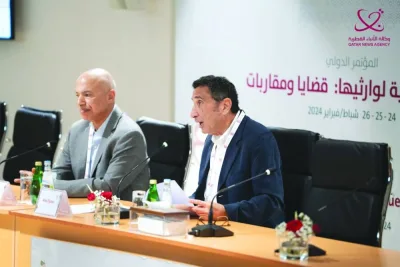Qatar Foundation International (QFI) and Annenberg Learner have announced the creation of the Teaching Arabic in the United States collection, a free online resource to advance best practices in Arabic language instruction and support the professional development of Arabic language teachers in K-12 classrooms across the USA.
The announcement coincides with Unesco’s annual celebration of World Arabic Language Day, as well as growing demand for Arabic language instruction and improved cross-cultural understanding between Arab and non-Arab communities in American schools.
“The Teaching Arabic collection is a valuable addition to our Teaching Foreign Languages K-12 Library,” said Michele McLeod, programme officer of Annenberg Learner. “It will introduce Arabic teachers to proven practices of language instruction and will also enlighten teachers of other languages on aspects of Arabic, such as teaching dialects, that will be helpful for their instruction.”
A recent QFI survey of over 200 US public and charter schools indicated that most K-12 Arabic language programmes are new, with more than two-thirds of programmes being launched in 2007 or later.
The Teaching Arabic collection includes seven classroom programmes from elementary through high school and seeks to address many of the nascent challenges in this emerging area of language instruction.
“One of the greatest challenges facing Arabic teachers is developing student-centred classrooms,” said QFI executive director, Maggie Mitchell Salem. “We strive to equip educators with the tools that help them create effective language classes to enhance critical thinking, problem-solving, and cultural competence, while broadening career options for students.”
Arabic teachers, many of whom are native speakers, can use the video resources to learn the most effective practices for teaching Arabic to non-native speakers that align with the world readiness standards for learning languages created by the American Council for the Teaching of Foreign Languages (ACTFL).
The classroom videos feature teachers from across the country modelling interpersonal, interpretive, and presentational modes of communication. Students use Arabic for informal interactions and to learn content from other discipline areas. A website and guide accompany the videos, providing a complete professional development experience.
The Teaching Arabic collection is funded by QFI and Annenberg Learner and was produced by WGBH Boston in co-operation with the ACTFL. The collection is available for free via the Annenberg Learner website or QFI’s open education resource site, Al-Masdar.



